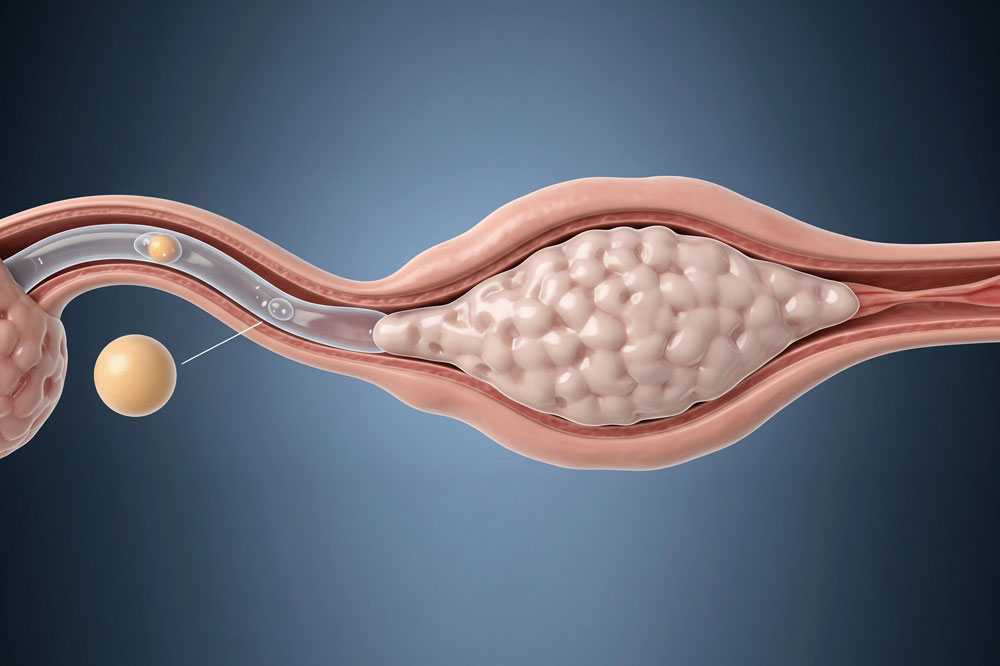Understanding Tube Blockage
Infertility: An inescapable truth
The whole world is grappling with a rising incidence of infertility due to various reasons. However, one of the most common causes in women is fallopian tube blockage. The fallopian tubes play a vital role in reproduction—they transport the egg from the ovary to the uterus, and fertilisation usually happens within these tubes.
So, if one or both the tubes are blocked, the chances of natural conception are significantly reduced. It’s imperative in such a scenario to understand the causes, symptoms, diagnosis and treatment options so that reproductive health can be safeguarded. Let’s delve more into this matter.

What is Tube Blockage?
Fallopian tube blockage, also known as tubal factor infertility, is quite a common occurrence and is said to happen when a passage within the tubes is partially or completely obstructed. This prevents sperm from reaching the egg or the fertilised egg from moving into the uterus. Blockage can affect one tube (unilateral) or both (bilateral). It is also noteworthy that the location of the blockage, whether near the uterus, middle portion or closer to the ovary, dictates the treatment choice.
What causes Tube Blockage?
Fallopian tube blockage is caused by several conditions such as:
- Pelvic Infections – Past pelvic inflammatory disease (PID), often caused by sexually transmitted infections like chlamydia or gonorrhoea, can scar and damage the tubes.
- Endometriosis – Tissue growth outside the uterus may lead to adhesions around the fallopian tubes.
- Previous Surgeries – Abdominal or pelvic surgeries, including appendectomy or C-sections, can leave scar tissue that obstructs the tubes.
- Tuberculosis – In countries like India, genital tuberculosis is an under-recognised cause of tubal blockage.
- Congenital Abnormalities – Although rare, some women are born with structural defects in their fallopian tubes.
Symptoms and Diagnosis
Unfortunately, fallopian tube blockage does not have any clear symptoms. Most women become aware of it only after struggling to conceive. Be that as it may some women may experience:
- Lower abdominal or pelvic pain, especially with endometriosis.
- Unusual menstrual patterns if associated with infections.
To confirm the diagnosis, doctors use tests such as:
- Hysterosalpingography (HSG): An X-ray test that checks if the dye flows freely through the tubes.
- Sonohysterography (SIS) or Saline Infusion Sonography: Uses ultrasound with saline and contrast.
- Laparoscopy with Chromopertubation: A minimally invasive surgery that directly visualises the tubes and checks their openness.
What are the treatment options?
Treatment options vary and are dependent on the severity and site of blockage. They are as follows:
- Medications & Infections – If infections are the cause, antibiotics can help prevent further damage, though they cannot reverse existing scarring.
- Surgical Correction – Procedures like tuboplasty or laparoscopy can remove adhesions and reopen blocked tubes.
- In Vitro Fertilisation (IVF) – For women with severely damaged or both blocked tubes, IVF offers the best chance of conception, as it bypasses the fallopian tubes altogether.
Beat the block
Blocked fallopian tubes are a significant but fortunately manageable cause of infertility. Early diagnosis, awareness of risk factors and timely treatment improve the chances of conception, whether naturally or through assisted reproductive techniques. Addressing tube blockage early can make a meaningful difference in fertility outcomes.